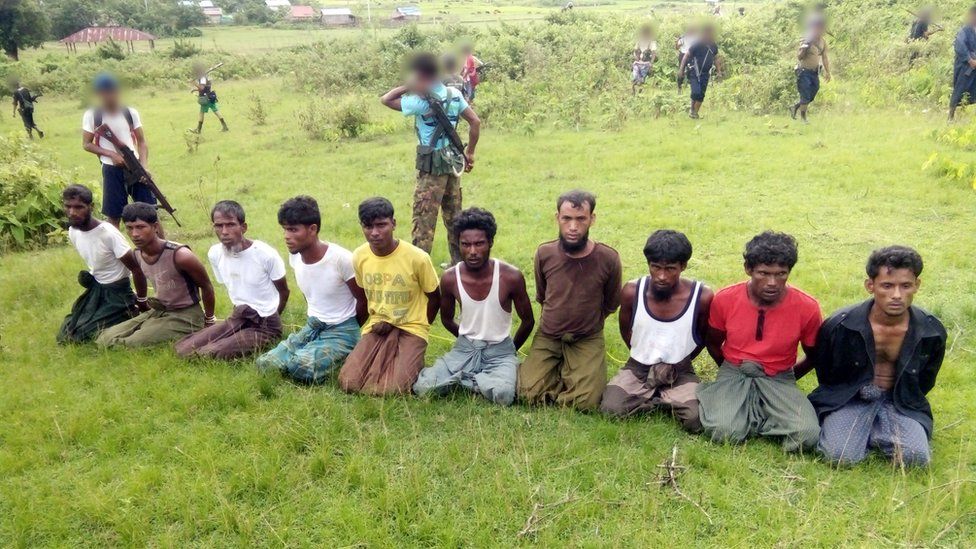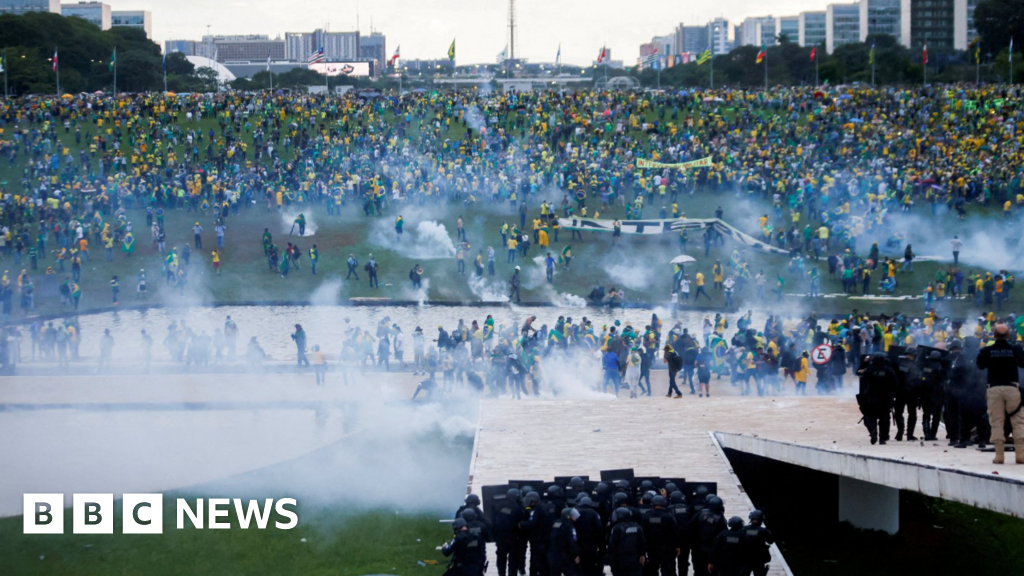ARTICLE AD BOX
 Image source, HANDOUT
Image source, HANDOUT
The weapons used in the infamous Inn Dinn massacre were made in Myanmar, the report says
Myanmar's military is producing a vast range of weapons to use against its own people thanks to supplies from companies in at least 13 countries, former top UN officials say.
The US, France, India and Japan are among those named, despite Western-led sanctions intended to isolate Myanmar.
The report says the home-produced arms are used to carry out atrocities against those who oppose the military.
Myanmar has been engulfed in violence since a February 2021 military coup.
Opponents of the coup, which ousted the elected government, have joined ethnic rebel groups in resisting military rule.
The Special Advisory Council on Myanmar's report notes that several UN member states continue to sell weapons to the military.
"An equally important factor, however, is the fact that Myanmar's armed forces can produce, in-country, a variety of weapons that are being used to target civilians," it says.
The firms named supply Myanmar's military with raw materials, training and machines, the report says, and the weapons produced as a result are not used to defend its borders.
"Myanmar has never been attacked by a foreign country," explains Yanghee Lee, the UN's former Special Rapporteur on Human Rights, and one of the report's authors.
"And Myanmar does not export any arms. Since 1950, it's made its own arms to use against its own people."
Image source, Reuters
Image caption,The military vastly outnumbers and outguns its opponents
Officially, more than 2,600 people have been killed by the military since the most recent coup. However, the real death toll is thought to be 10 times higher.
"When it started... it seemed that the military could overpower those fledgling opposition movements, but the tide has turned a little bit in recent months and weeks," explains Soe Win Tan, head of the BBC's Burmese service.
"What the opposition are lacking is the air power the Myanmar junta has at its disposal."
The weight of sanctions and international isolation imposed in the wake of the coup has not stopped Myanmar's rulers from manufacturing a litany of weapons, including sniper rifles, anti-aircraft guns, missile launchers, grenades, bombs and landmines.
Alongside Yanghee Lee, the report was written by Chris Sidoti and Marzuki Darusman, both from the UN's Independent International Fact-Finding Mission on Myanmar.
Image source, Getty Images
Image caption,The marking of the Myanmar's Directorate of Defence Industries is on this bullet casing found after a lethal crackdown on protesters in 2021
Their work sources leaked military documents along with interviews with former soldiers and satellite imagery of the factories. Photos have also been invaluable: images taken in 2017 prove the home-produced weapons were used before the coup.
Soldiers are seen carrying made-in-Myanmar rifles during the Inn Din massacre, when Myanmar troops killed 10 unarmed ethnic Rohingya men.
"More recently, we had the massacres that took place in the Sagaing region," explains Chris Sidoti, "particularly the bombing and shelling of a school that resulted in a number of children and others being killed.
"The weapons that were found, or the... military artillery shell casings that were found on that occasion were clearly identifiable as coming from those production plants."
Some of the equipment used to make weapons is believed to come from Austria. High-precision machines made by the Austrian supplier GFM Steyr are used in several locations, the Special Advisory Council says, to manufacture gun barrels.
When the machines need maintenance, they're shipped to Taiwan, where GFM Steyr technicians reportedly restore them before they're returned to Myanmar. The report says it's unclear whether the Austrian company's technicians are aware they're working on things that will be used inside Myanmar.
GFM Steyr did not respond to a BBC request for comment on the report's findings.
The authors of the report admit they have only uncovered a fraction of the weapons production network, but a number of countries are thought to be involved:
- Raw materials from China have been traced to weapons production in Myanmar, including copper and iron believed to come from China and Singapore
- Key components such as fuses and electric detonators have been tracked from companies in India and Russia using shipping records and interviews with former military sources
- The machinery in Myanmar's weapons factories is said to come from Germany, Japan, Ukraine and the US. Software to programme the machines is believed to originate from Israel and France
- Singapore appears to function as a transit hub, the report says, with Singaporean companies operating as go-betweens for Myanmar's military buyers and external suppliers.
For decades, Myanmar's military has been subject to a range of international sanctions, but they haven't stopped its production of weapons. The number of factories is multiplying - from around six in 1988 to as many as 25 factories today.
"The international sanctions have been very hit and miss," says Chris Sidoti. "There haven't been sanctions imposed by the United Nations Security Council, but only by individual states or groups of states.
"So, it's been relatively easy for many companies to avoid the sanctions, by going through other companies in countries that do not impose sanctions, or dealing with local Myanmar intermediaries."
Watch: BBC investigates Myanmar military's mass killings
So far, it seems that Myanmar doesn't export weapons to other countries. However, it showcased a range of weapons at a Thai weapons trade fair in 2019. Bullets, bombs and grenade launchers were all neatly lined up on display shelves at the fair.
"Life in Myanmar for ordinary people is incredibly tough," says Ronan Lee, doctoral lecturer at Loughborough University London.
"Myanmar is not functioning as a viable country and I think it's close to internal state collapse.
"The opportunity for the international community, who care about the people of Myanmar, is now for them to tell the military that it can't continue to build weapons that they are going to use against civilians."

 1 year ago
17
1 year ago
17








 English (US)
English (US)